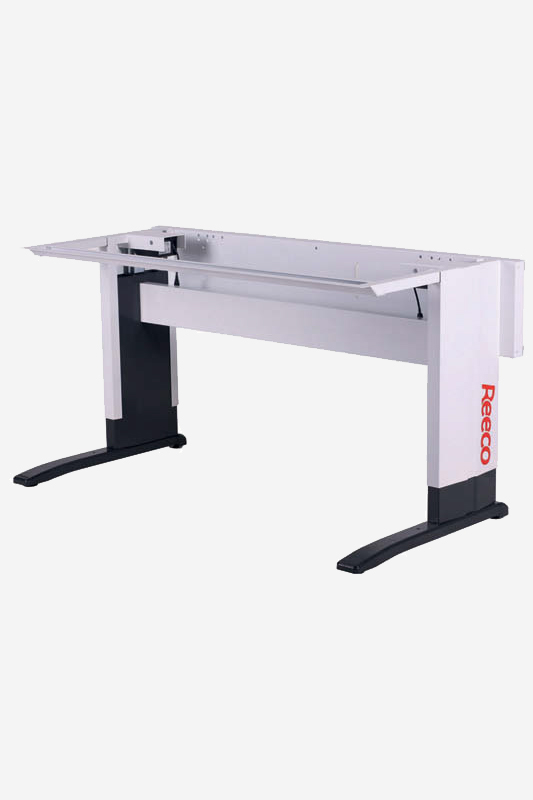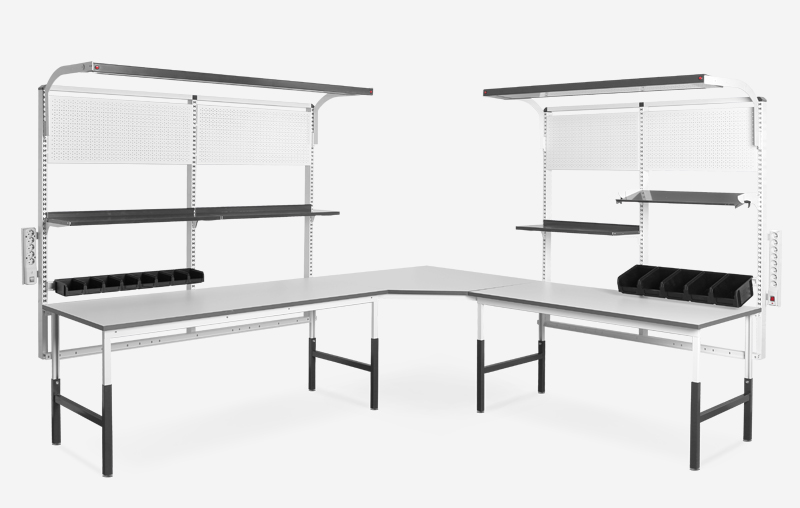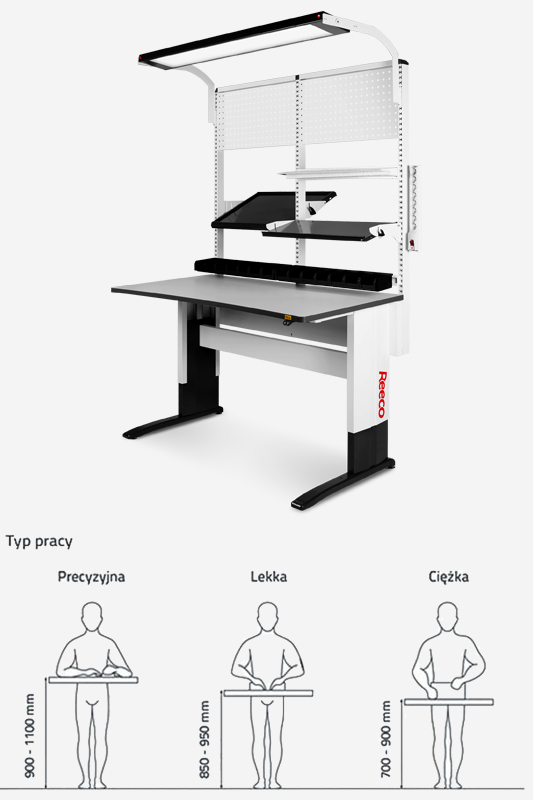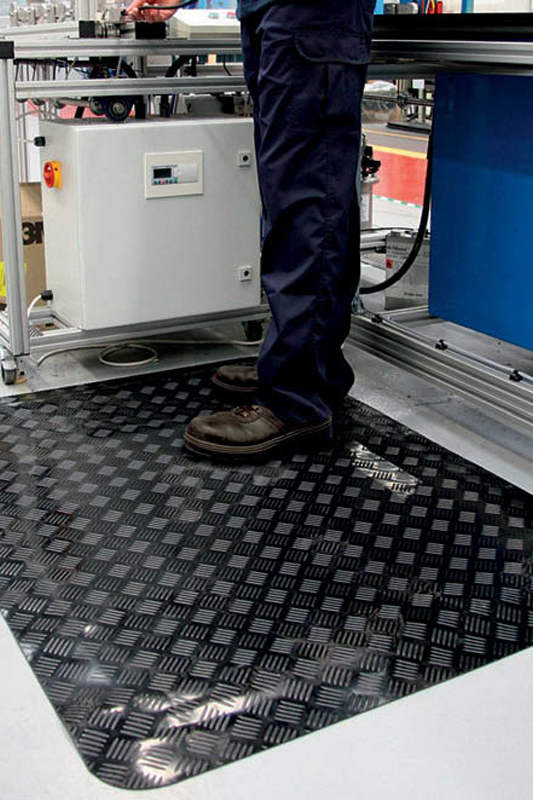Today, every company is committed to doing everything it can to improve the well-being of its employees. This applies not only to the work area, but also to the work culture. This contributes to reducing stress and anxiety. Creating ergonomic and comfortable workstations is certainly a positive step in promoting employee well-being at the workplace. It also increases commitment and motivation. This makes employees even more productive. Increased productivity in turn leads to increased profitability.
WORKING POSITION – STANDING OR SITTING?
Although some work is currently recommended to be done in a standing position, there is a real risk of being in that position for long periods of time. The risk is even greater if the operator constantly arrives on hard concrete surfaces. The most common ailments of workers exposed to such work are varicose veins, swelling of legs and feet, pain in the cross, fasciitis, blood circulation disorders and hypertension.
“Research conducted by researchers from the University of Loughborough and the University of Leicester in 2011 compared the consequences of the shortest time spent sitting with the consequences of the longest time spent sitting. For long periods of time spent sitting, among other things:
– an increase of 112% in diabetes risk,
– an increase of 147% in cardiovascular problems,
– 90% more deaths due to cardiovascular events,
– an increase of 49% in deaths for any cause.
So how to find the balance between standing and sitting? If the operator’s work requires long periods of sitting, it is recommended to get up at least every 20-30 minutes. If, on the other hand, tasks require standing for long periods of time, you should change your position as often as possible and take a sitting position from time to time. So how do you create these working conditions in your environment?
LET’S START WITH THE FURNITURE
In Germany and all Scandinavian countries there are relevant regulations governing how the workplace is equipped.

The standards developed provide employees with appropriate conditions, which are the responsibility of the employer. An employee admitted to work in production must be provided with a workstation technically compatible with the developed standards, in planning of which great emphasis has been placed on ergonomics. It must be equipped with an appropriate chair and a table as a working space. The table must be adjustable in height, providing the worker with a comfortable sitting and standing position where his posture must be natural and not forced by the height of the worktop.
In addition, the operator should be provided with a suitable chair that is also adjustable in height. Such extremely strict ergonomic and safety requirements are met by Reeco industrial furniture for a variety of industries, from manufacturing and service companies in the electronics industry, to warehouses and laboratories, lecture halls, archives and heavy industry. In the case of the German and Scandinavian markets mentioned above, the Reeco industrial table, based on a Premium construction with electric height adjustment of the table top, meets the regulations applicable there.
This construction is certified to meet the requirements of PN-EN 13150:2004 and PN-EN 14727:2006 standards. It ensures maximum ergonomics while maintaining high quality of workmanship and at an affordable price. Extremely solid materials used to make Reeco Premium tables allow for loads of up to 600 kg, while maintaining full adjustment of electrically controlled lifts. The height range offered by the Recco tables is fully in line with the ergonomic workplace specification required for industrial furniture in countries that already comply with strict ergonomic workplace preparation conditions.
The worker can infinitely adjust the height of the tabletop in the range of 670-1120 mm by means of a driver installed in the front of the table. Such a table allows not only to provide the employee with the most comfortable working conditions in the working space, but also to adjust the height of the table top to the posture during the work and its current change by means of an easily accessible driver.
Reeco Premium tables are adapted to work in EPA conditions. Thanks to their modular design, they allow the workstation to be extended with additional elements at any time, thus enabling the workstation to be equipped with additional lighting, shelves for instruments, tools, cuvettes and other elements needed for work.
2IN1 – ANTI-FATIGUE ANTISTATIC MATS
The use of an antistatic floor mat with a complete grounding system undoubtedly protects every workplace from electrostatic discharges. Its task is to discharge dangerous for components and equipment, the charge to the grounding point. In order to ensure greater comfort of work, it is worthwhile to consider using an antistatic mat and an anti-fatigue mat at the same time. The foam base of such a mat guarantees high comfort when working in a standing position on a hard surface, which significantly reduces the feeling of tiredness.
Such a mat forces the feet to move regularly, as the employee will unconditionally try to gently adjust the position of the feet to the soft surface of the mat. This improves blood circulation and the work of calf and foot muscles. In addition, anti-fatigue mats relieve strain on the back and joints by helping to distribute tension over a larger area, thus absorbing some of the forces generated when standing.
The anti-fatigue properties are provided by the mat’s EPDM foam backing, while the highly durable top surface made of nitrile rubber and NBR/SBR reduces the risk of slipping and is resistant to oil. It is also worth mentioning the thermal insulation properties of such a mat, which additionally increases comfort.
SUMMARY
The 2013 CBI/Pfizer Absenteeism and Worker’s Health Survey of Worker Absenteeism and Worker’s Health showed that sickness absence costs the UK economy £14 billion a year overall. According to HSE statistics, £7.4 billion is the cost directly related to MSDs.
These costs include not only sick pay but also overtime, temporary work and productivity losses. Therefore, it is just as important as a properly prepared position to comply with the standards relating to the interruptions to activities, as well as to provide space and working conditions throughout the plant to allow for the comfortable performance of tasks.
In many Western European countries, the obligation to prepare an ergonomic workplace is regulated. Soon they may also apply in Poland. Such a thought makes us think about the best way to plan the workplace, and especially about the basics of its use.
DOWNLOAD PDF (IN POLISH)


